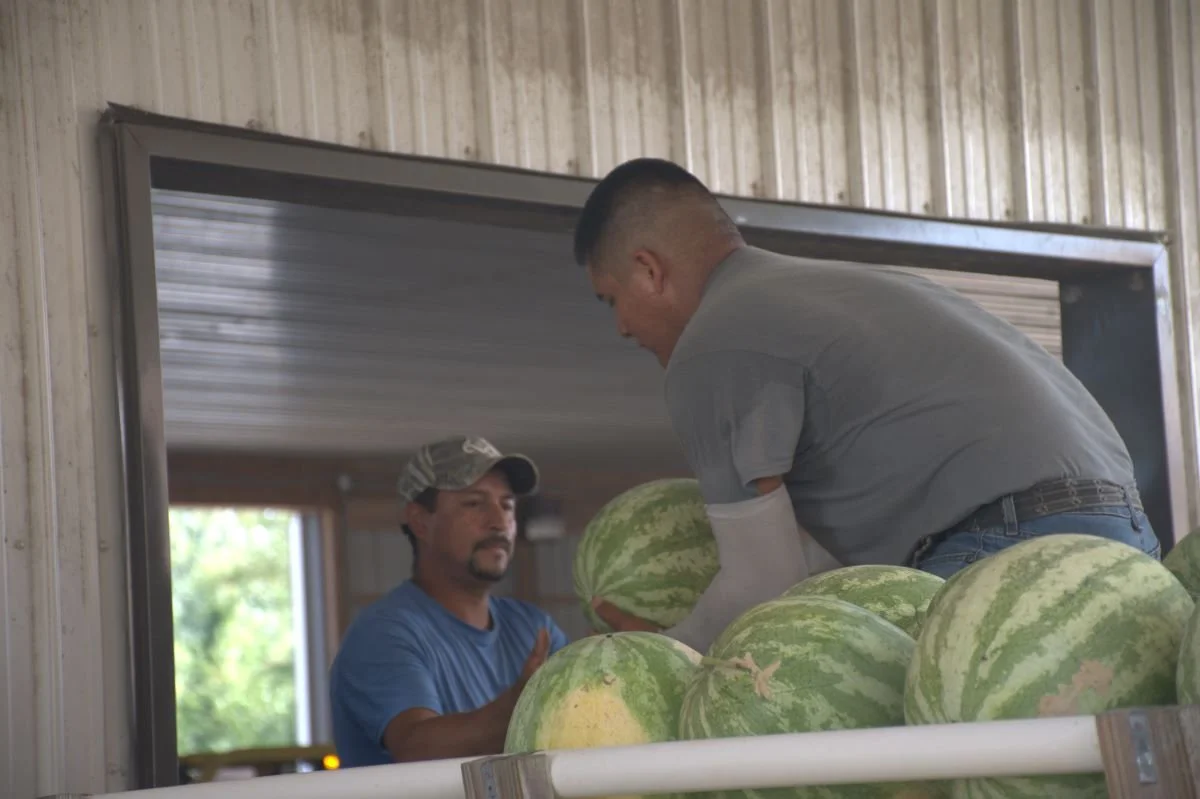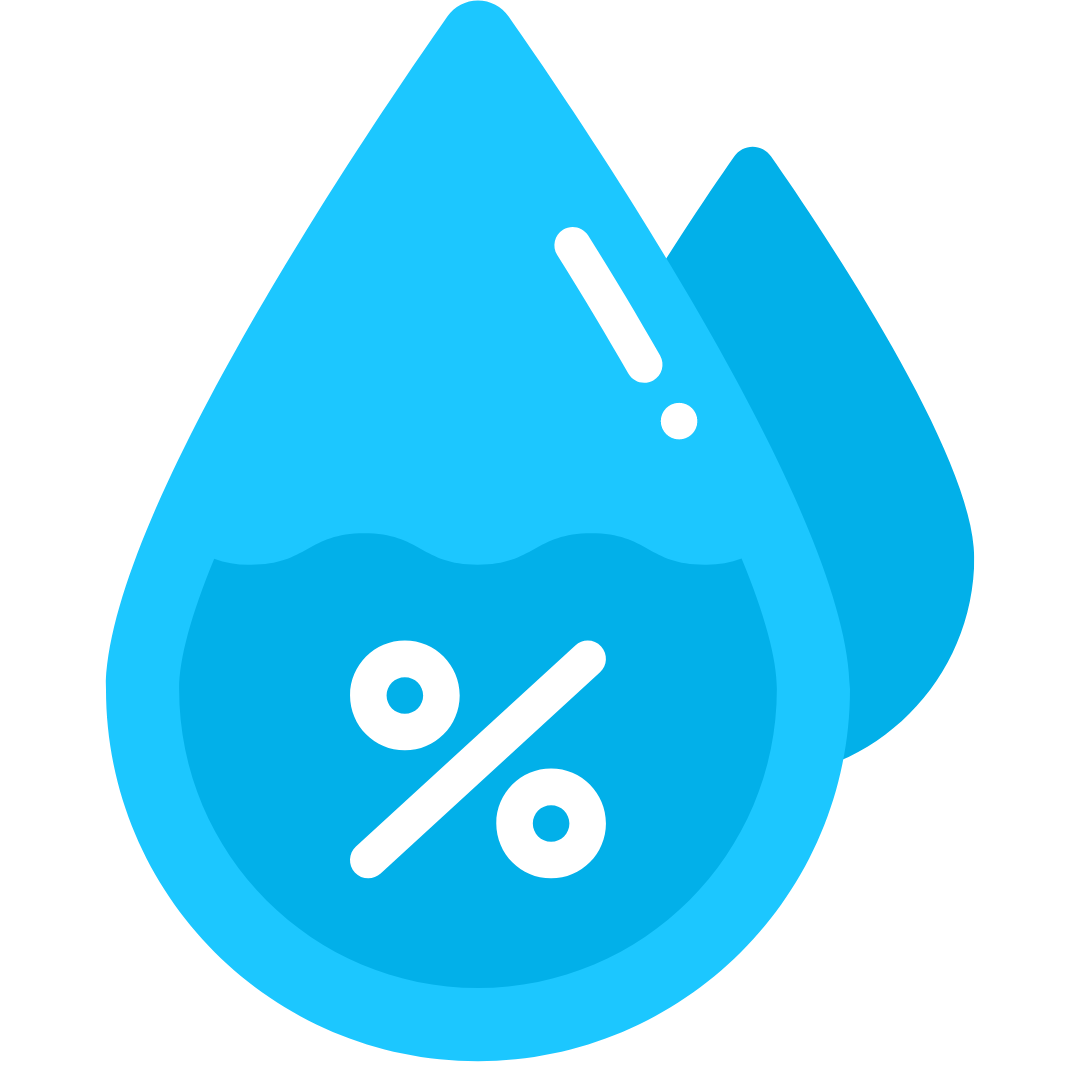FARMWORKER HEALTH
Monitoring the respiratory health of farmworkers on Maryland’s Eastern Shore
The RESPIRAR field team collaborates with seasonal and migrant farmworkers to examine the connections between housing conditions, indoor air quality, and respiratory health risks.
A case study on Maryland’s Eastern Shore
Farmworkers living and working on the Eastern Shore provide valuable insights into the migrant and seasonal farmworker experience in the United States.
Our study aims to understand how housing conditions and indoor air quality may affect the respiratory health among these workers, particularly in light of the disproportionate rates of infectious respiratory diseases during the COVID-19 pandemic. The findings from this project can help inform future measures to protect workers from respiratory viruses.
Maryland's largest commercial industry is agriculture, contributing $8.25 billion annually to the economy. Many commercial farmlands are located on the Eastern Shore, a rural, isolated region with nine counties east of the Chesapeake Bay. Like other rural communities in the U.S., the local population is declining, leading to a growing reliance on noncitizen and immigrant labor to sustain the agriculture, seafood, and poultry industries. These demographic shifts have created complex community dynamics between long-term residents, immigrants, and migrant seasonal workers.
The local agriculture industry employs nearly 350,000 people, with less than 2% of workers being full-time farmers. According to the U.S. Department of Homeland Security, Maryland saw an 18% increase in H2A visa petitions and employer approvals from 2017 to 2020.
Migrant and seasonal farmworkers travel to Maryland from Latin America (primarily Mexico) and the Caribbean (Haiti, Jamaica) as part of the Eastern Migratory Stream or through the H2A guest work visa program.

East Coast Stream for migrant farmworkers
Migrant farmworkers follow three major traveling routes or "streams" in the U.S.: the East Coast Stream, the Mid-Continent Stream, and the West Coast Stream.
The East Coast Stream begins in Florida and extends through the Carolinas, mid-Atlantic states, Ohio, New York, and New England. Workers arrive on the Eastern Shore in late March or early April for the spring harvest season. Some stay through the fall, while other workers move on to the Carolinas for the summer and New York and New England in the fall.
In Maryland, workers help harvest various crops, including asparagus, strawberries, peas, cherries, snap beans, cucumbers, tomatoes, lima beans, cantaloupes, watermelons, white potatoes, and sweet corn. Some migrant workers are employed at nurseries providing trees and shrubs for landscaping companies and retail stores, and others work in processing plants such as tomato canneries.

H-2A Visa Program
The H-2A guest worker program was established in 1986 as a temporary, seasonal solution designed to help American farmers fill employment gaps by hiring workers outside the United States. Workers support the planting, cultivating, or harvesting processes.
Administered by the U.S. Department of Labor, the program has a documented history of failing to protect workers from exploitation.
The need for increased immigrant labor is growing in some of Maryland's most politically conservative areas, including the Eastern Shore.
Politicians and business owners advocate for more H-2A visas to support the region's agriculture industry.
Most workers on the Eastern Shore are employed and managed by middlemen—farm labor contractors who petition for visas and transport the workers to the farms.
Farmers, often consumed by the day-to-day operations of running a farm, can be unaware of the farmworkers' living and working conditions.
The exploitation of essential migrant workers during the COVID-19 pandemic
Migrant and seasonal farmworkers in Maryland were deemed "essential" during the COVID-19 pandemic to help process chicken, pick crabs, and harvest crops critical to the region's food supply and economy. Perdue Farms, for example, is located in Salisbury. Despite guidelines from the Centers for Disease Control and Prevention (CDC) for these industries, federal and state occupational and health authorities did not mandate adherence to these guidelines.
Over the past few years, our team and partners have heard and observed many accounts of migrant workers placed in precarious living and working conditions. Workers often had to choose between earning a living for themselves and their families. Or protecting their health and not getting paid while risking future employment opportunities. Many continued working while ill until they became bedbound.
By 2020, the greater Salisbury metropolitan area on the Eastern Shore was ranked #10 on the New York Times list of hot spots for the highest daily average growth rate of cases, primarily due to the local poultry industry.
Honoring regulatory mandates and following health guidelines could have saved lives and reduced the unequal burden of harm that fell on essential migrant and seasonal workers.
Our team collaborates with farmworker housing locations, community partners, and the University of Maryland's Public Health AeroBiology Laboratory (PHAB Lab) to examine the relationship between housing standards and conditions, indoor air quality, respiratory virus rates, and other respiratory health risks among migrant and seasonal farmworkers.
We employ a longitudinal design to examine these relationships and potential health risks.
Methodology
Longitudinal Design
Longitudinal studies collect data at set intervals while assessing how one or more variables impact a population over time. Our field team collects data weekly throughout the harvest season.
We are examining variables such as COVID-19 positivity rates, vaccination status, positive tests for the flu and respiratory syncytial virus (RSV), indoor air quality, and housing conditions.
COVID-19 Positivity Rates
The percentage of people testing positive for COVID-19 provides insight into how widespread the infection is within a community. If more than 5% of people in a community test positive for COVID-19, the community and authority figures should implement certain precautions to help minimize the spread of the virus.
Our field team administers respiratory health questionnaires and anterior nasal swab (ANS) testing for SARS-CoV2, influenza, and RSV with participants. The PHAB at the University of Maryland processes the biosamples. The team shares positive test results with participants within 24 hours.
Monitoring Indoor Air Quality
Healthy indoor air is critical for reducing exposure to respiratory viruses, including COVID-19 and the flu. Our team administers respiratory health questionnaires to participants and, when permitted, places indoor Omni devices in worker housing to monitor and measure carbon dioxide, humidity levels, particulate matter (PM) 2.5, temperature, and total volatile organic compounds.
Carbon Dioxide (CO₂) levels
Carbon dioxide, or CO₂, builds up indoors in the air we exhale, especially in buildings with poor ventilation. Higher levels of CO₂ can facilitate the spread of respiratory viruses.
Humidity levels
Humidity levels indicate the amount of moisture in the air, and maintaining optimal humidity levels (30-50%) can help reduce the spread of viruses.
High humidity promotes the growth of mold, mildew, and dust mites, increasing the spread of airborne pollutants while becoming breeding grounds for bacteria and viruses. In contrast, low humidity levels can make people more susceptible to respiratory viruses by drying out mucous membranes in the respiratory tract.
Particulate Matter (PM) 2.5 levels
Particulate matter (PM) 2.5 is very fine dust that can harm your lungs and heart. High levels of PM2.5 can increase the risk of respiratory viruses by damaging the respiratory tract's mucous members and weakening the immune system.
Temperature
Maintaining an optimal indoor temperature between 68°F and 72°F (20°C and 22°C) helps reduce the risk of respiratory viruses while exacerbating respiratory conditions. High temperatures can create environments conducive to the survival and transmission of viruses, whereas cooler temperatures can compromise the immune system, making people more susceptible to infections.
Volatile Organic Compounds (VOCs)
Volatile organic compounds (VOCs) are chemicals emitted as gases that can contribute to poor indoor air quality. Higher levels of VOCs irritate the respiratory system, exacerbate respiratory conditions like asthma, weaken the immune system, and increase susceptibility to respiratory infections.

Housing Assessments
Crowded indoor spaces with poor ventilation increase the risk of transmitting respiratory viruses, including COVID-19 and the flu. Our project evaluates whether housing conditions meet the Occupational Safety and Health Administration (OSHA) and other federal standards throughout the growing season.
We measure the availability and quality of housing for farmworkers by assessing factors, including the number of people living in the same house, the number of workers sharing bedrooms and bathrooms, and access to basic amenities like air conditioning. Our team conducts on-site evaluations and administers surveys completed by participants.












